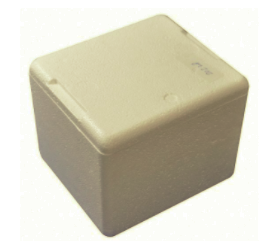Introduction
Due to the sensitive nature of the sensor, communication and power system equipment, protection from both the temperature conditions at up to 100,000 ft. and the impact with the ground when landing is required if one wants to salvage and reuse their instruments after the balloon flight. Therefore, a lightweight, compact, and durable container, or payload box, that will house and protect the other systems must be created.
Theory
In order to launch the balloon, there are regulations in terms of the Federal Aviation Agency to launch a free balloon as well as our own design. They are as follows:
- The device requirements include being lightweight, compact, and able to withstand atmospheric conditions high up all while protecting the delicate instruments contained inside during and after the balloon launch. The box and payload together cannot exceed 1360 g (3 lb.).
- Also, to meet U.S. Federal Aviation Administration (FAA) regulations (14 CFR §101.1), the box and payload cannot exceed a weight/size ratio of 3 oz. /in2 (13.18 g/cm2 , 0.1875 psi).
- Protrusions from the device must have dampers, contain no sharp edges, and be no more than 6.5 mm on any side.
- Antenna are an exception to this requirement: they can be 5 ft., but cannot have an impact force that exceeds 50 lb. to break, as per U.S. FAA regulations (14 CFR §101.35).
- The device must withstand atmospheric conditions at that height (temperatures dropping to -51°C, or -60°F).
- Insulation is required to protect alkaline batteries for the instruments and keep the inside temperature above -18°C (0°F) at minimum. The batteries also cannot operate at temperatures above 55°C or 130°F (Energizer Holdings, Inc.).
- The rope connecting the payload box to the balloon cannot have a tensile strength greater than 50 lb., as per U.S. FAA regulations (14 CFR §101.35).
Implementation
For our launch our biggest concerns are thermal risks and protection of the systems enclosed inside of it. To regulate temperature inside the payload, we will be using a styrofoam container as it will help keep the temperatures higher inside the box when at high altitudes but also does not weigh a significant amount for the amount of surface area and thickness it provides. To provide further cushioning, the payload components will also be cushioned by newspaper as it doesn’t weigh a lot. Holes will be created in the container to give access to the antenna and sensor so the readings are accurate.

Styrofoam Payload Container
